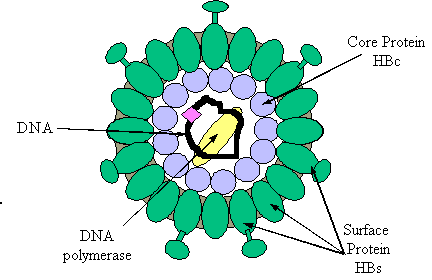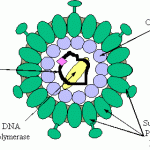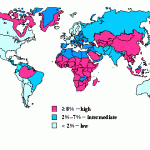What is hepatitis?
The term ‘hepatitis’ simply means inflammation of the liver. Hepatitis may be caused by a virus or a toxin such as alcohol. Other viruses that can cause injury to liver cells include the hepatitis A and hepatitis C viruses. These viruses are not related to each other or to hepatitis B virus and differ in their structure, the ways they are spread among individuals, the severity of symptoms they can cause, the way they are treated, and the outcome of the infection.
What is the scope of the problem?
Hepatitis B is an infection of the liver caused by the hepatitis B virus (HBV). It is estimated that 350 million individuals worldwide are infected with the virus, which causes 620,000 deaths worldwide each year. According to the Centers for Disease Control (CDC), approximately 46,000 new cases of hepatitis B occurred in the United States in 2006.
In the United States, rates of new infection were highest among people aged 25 to 44 years (3.1 cases per 100,000 population) and lowest among those younger than 15 years of age (0.02 per 100,000). This reflects the major modes of transmission of hepatitis B (sexual transmission, illicit drug use, exposure to infected blood) and the effect of universal vaccination of infants. In the United States, there has been a 75% decrease in newly diagnosed cases of hepatitis B during the past decade. This decrease is attributed to increased vaccination and to heightened public awareness of HIV/AIDS and the resulting safer sexual practices.
When a person first gets hepatitis B, they are said to have an ‘acute’ infection. Most people are able to eliminate the virus and are cured of the infection. Some are not able to clear the virus and have ‘chronic’ infection with hepatitis B that is usually life-long (see below). In the United States an estimated 800,000 to 1.4 million people are chronically infected with hepatitis B.
Hepatitis B is found throughout the world. Some countries have much higher rates of infection than the United States; for example, in Southeast Asia and Sub-Saharan Africa, as many as 15% to 20% of adults are chronically infected with hepatitis B.
What kind of a virus is hepatitis B?
The hepatitis B virus is a DNA virus, meaning that its genetic material is made up of deoxyribonucleic acids. It belongs to a family of viruses known as Hepadnaviridae. The virus is primarily found in the liver but is also present in the blood and certain body fluids.
Hepatitis B virus consists of a core particle (central portion) and a surrounding envelope (outer coat). The core is made up of DNA and the core antigen (HBcAg). The envelope contains the surface antigen (HBsAg). These antigens are present in the blood and are markers that are used in the diagnosis and evaluation of patients with suspected viral hepatitis.
How does hepatitis B virus cause liver injury?
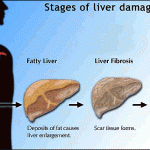 The hepatitis B virus reproduces in liver cells, but the virus itself is not the direct cause of damage to the liver. Rather, the presence of the virus triggers an immune response from the body as the body tries to eliminate the virus and recover from the infection. This immune response causes inflammation and may seriously injure liver calls. Therefore, there is a balance between the protective and destructive effects of the immune response to the hepatitis B virus.
The hepatitis B virus reproduces in liver cells, but the virus itself is not the direct cause of damage to the liver. Rather, the presence of the virus triggers an immune response from the body as the body tries to eliminate the virus and recover from the infection. This immune response causes inflammation and may seriously injure liver calls. Therefore, there is a balance between the protective and destructive effects of the immune response to the hepatitis B virus.
How is the hepatitis B virus spread (transmitted)?
Hepatitis B is spread mainly by exposure to infected blood or body secretions. In infected individuals, the virus can be found in the blood, semen, vaginal discharge, breast milk, and saliva. Hepatitis B is not spread through food, water, or by casual contact.
In the United States, sexual contact is the most common means of transmission, followed by using contaminated needles for injecting illicit drugs, tattooing, body piercing, or acupuncture. Additionally, hepatitis B can be transmitted through sharing toothbrushes and razors contaminated with infected fluids or blood.
Hepatitis B also may be spread from infected mothers to their babies at birth (so-called ‘vertical’ transmission). This is the most prevalent means of transmission in regions of the world where hepatitis B rates are high. The rate of transmission of hepatitis B from mother to newborn is very high, and almost all infected infants will develop chronic hepatitis B. Fortunately, transmission can be significantly reduced through immunoprophylaxis (see below).
Rarely, hepatitis B can be transmitted through transfused blood products, donated livers and other organs. However, blood and organ donors are routinely screened for hepatitis which typically prevents this type of transmission.
What are the symptoms of acute hepatitis B?
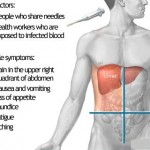 Acute hepatitis B is the period of illness that occurs during the first one to four months after acquiring the virus. Only 30% to 50% of adults develop significant symptoms during acute infection. Early symptoms may be non-specific, including fever, a flu-like illness, and joint pains. Symptoms of acute hepatitis may include:
Acute hepatitis B is the period of illness that occurs during the first one to four months after acquiring the virus. Only 30% to 50% of adults develop significant symptoms during acute infection. Early symptoms may be non-specific, including fever, a flu-like illness, and joint pains. Symptoms of acute hepatitis may include:
- fatigue,
- loss of appetite,
- nausea,
- jaundice (yellowing of the skin and eyes), and
- pain in the upper right abdomen (due to the inflamed liver).
Rarely, acute hepatitis damages the liver so badly it can no longer function. This life-threatening condition is called “fulminant hepatitis.” Patients with fulminant hepatitis are at risk of developing bleeding problems and coma resulting from the failure of the liver. Patients with fulminant hepatitis should be evaluated for liver transplantation. Small studies suggest that the drug lamivudine (Epivir), may be of limited assistance in these cases (see Part 2).
